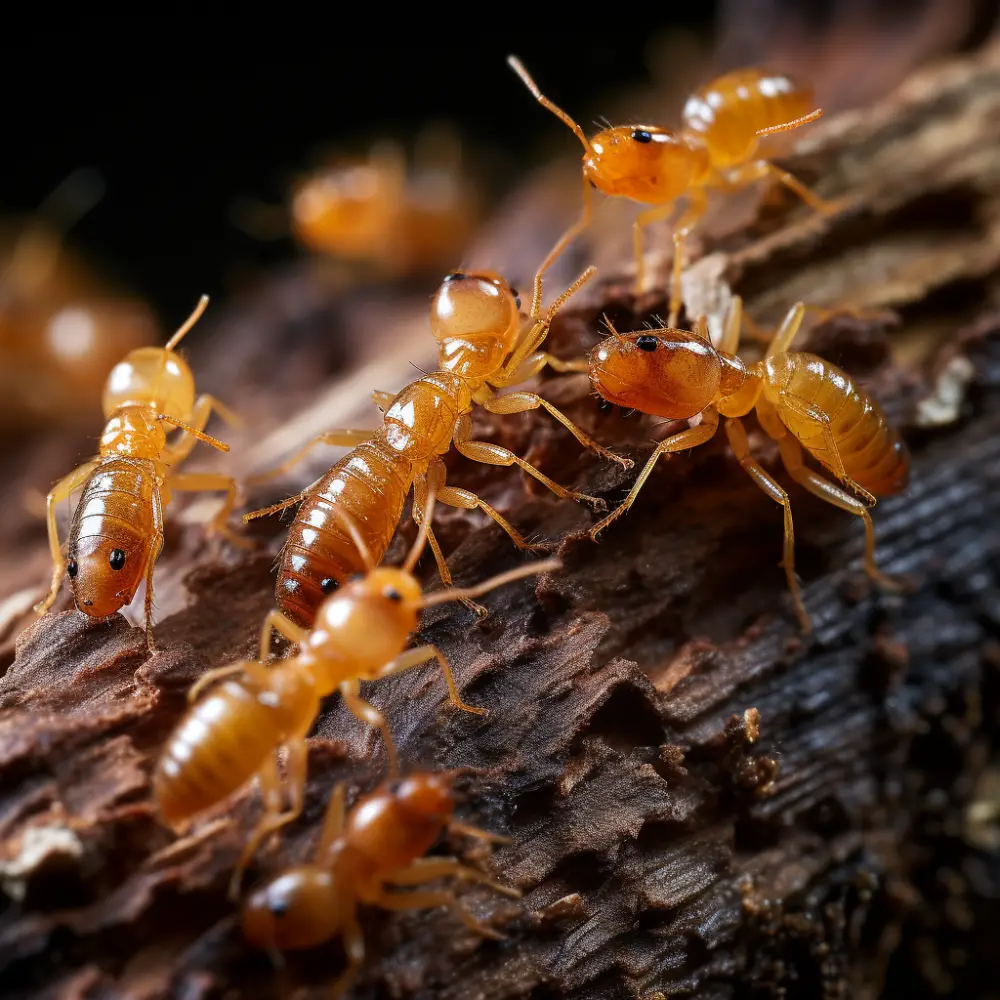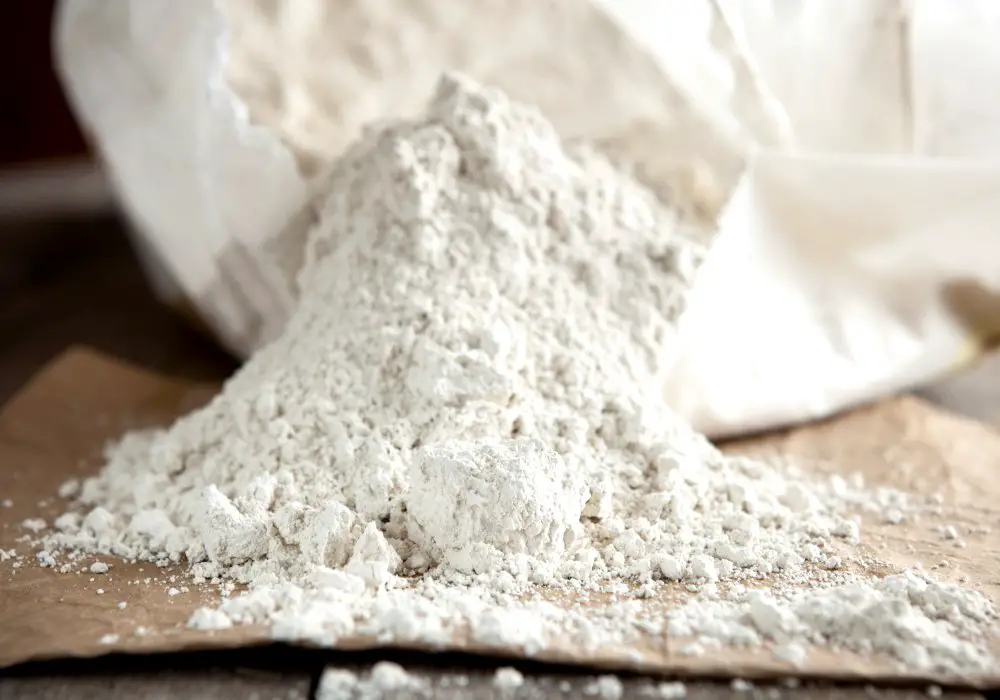Termites can cause extensive damage to wooden structures and furniture, making them a dreaded pest for homeowners. Eradicating these wood-digesting insects requires effective solutions, and several methods have been used over the years.
Boiling water has various practical applications due to its ability to destroy bacteria and pathogens in everyday life.
Quick Answer:
Yes, boiling water kills termites on contact but is not practical for treating infestations deep in wood or underground. Professional pest control methods are more effective for handling termite infestations.
The premise behind using boiling water to kill termites is that the extremely high temperature will scald and eliminate them on contact.
Understanding Termites
Species Overview
There are several species of termites, each with unique characteristics and habitats.
Some common types of termites include:
- Subterranean termites: These termites live underground and build elaborate tunnel systems. They are the most common and destructive type of termite in North America.
- Drywood termites: As their name suggests, drywood termites can survive in dry environments. They typically infest wooden structures and do not require contact with soil.
- Dampwood termites: These termites prefer moist environments and infest rotting or water-damaged wood.
- Formosan termites: Originally from Asia, Formosan termites are an invasive species now found in the United States. They are very aggressive and can cause extensive damage in a short period.
Recognizing Termite Infestations

Detecting a termite infestation can be challenging, as they often remain hidden within the structures they infest.
Some common signs of termite infestations include:
- Visible termites: Swarmers or winged termites are often the first visible sign of an infestation. They fly from the colony to establish new nests.
- Mud tubes: Subterranean termites build protective tunnels made of soil, wood, and saliva to travel between their colony and food sources. Mud tubes are often found on walls or foundation.
- Damaged wood: Termites consume cellulose in wood, creating hollowed-out spaces within the infested wood.
- Frass: Drywood termites expel wood debris called frass. Frass can resemble sawdust and may accumulate near infested wood.
Methods to Kill Termites
There are several methods available to kill termites, and in this section, we will explore three of them.
Boiling Water
Boiling water can be an effective method to kill termites, as the hot temperature can quickly eliminate them. To use boiling water, simply pour the water onto the affected area where termites are present.
The high temperature will cause their exoskeleton to weaken, resulting in death. However, the boiling water method may not be suitable for all situations, as it might not reach all termites in a colony or may damage the surrounding area.
Chemical Treatments
Chemical treatments are a common and effective way to control termite infestations.
Some of the popular chemicals used as termiticides and pesticides include:
- Fipronil: This active ingredient is found in products like Termidor SC and Termidor Foam. It works as a slow-acting poison that targets the nervous system, eventually killing the termites.
- Bifenthrin: A synthetic pyrethroid, bifenthrin is a long-lasting termiticide that acts as a barrier, killing termites upon contact.
- Imidacloprid: Part of the neonicotinoid class of insecticides, imidacloprid disrupts the termites’ nervous system, leading to paralysis and death.
- Hexaflumuron: This active ingredient is often used in baiting systems, acting as an insect growth regulator that interferes with termite molting, eventually causing death.
DIY Solutions

For those looking to tackle termite control themselves, there are several DIY solutions available:
- Diatomaceous Earth: Made from crushed fossilized remains of diatoms, this fine powder can be sprinkled around the affected area. Termites that come into contact with diatomaceous earth will experience damage to their exoskeletons, leading to dehydration and death.
- Baking Soda: Mixing baking soda and water creates a paste that can be applied to termite-infested areas. The mixture works by altering the pH balance in the termites’ digestive system, leading to their death.
- Beneficial Nematodes: These microscopic worms are a natural predator of termites. Releasing them into the affected area will allow them to infiltrate termite colonies, killing them from within.
- Permethrin: Permethrin is a synthetic pyrethroid that can be used for termite control. Application of this chemical can create a barrier, preventing termites from entering structures and killing them upon contact.
- Vinegar: A mixture of water and vinegar can be sprayed on termite-infested areas. The acidic nature of vinegar will help to break down the termites’ exoskeletons, ultimately leading to their death.
Professional vs. DIY Termite Control

Hiring a Professional
Hiring a professional pest control company can often be a more effective and reliable method of termite control than attempting DIY treatments. Exterminators like Terminix and Orkin are trained to identify the various termite species, their nesting habits, and the most effective ways to eliminate them.
The professional termite treatment provided by these companies typically involves specialized equipment, chemicals, and targeted measures that may not be available to the average homeowner.
A professional pest control company can also inspect your property regularly, ensuring that termite infestations are discovered and treated before they become significant problems.
Additionally, most experts offer guarantees in case termites return, giving you added peace of mind.
Attempt Treatments at Home
On the other hand, there are various DIY methods and home remedies available for homeowners looking to tackle termite control by themselves.
These DIY termite treatments may include the use of:
- Bait stations: Placing strategic bait stations around the perimeter of your home can help attract and control termite populations.
- Cardboard traps: Termites are attracted to cellulose, and setting up dampened cardboard traps in infested areas can help concentrate termites for easy removal.
- Nematodes: These microscopic worms can be introduced into termite colonies, where they infect and kill the termites.
- Diatomaceous earth: This natural powder can be applied to areas where termites are present, cutting their exoskeletons and desiccating them.
When using DIY termite treatment methods, it is essential to apply them consistently and monitor their effectiveness. Homeowners should also be cautious of non-regulated chemicals, as they may pose risks to human health or the environment.
While DIY methods can be an affordable and flexible way to control termite infestations, they may not be as efficient or thorough as professional pest control.
Additionally, DIY treatments may only address the visible signs of infestation and may not effectively treat the root cause or hidden termite colonies.
Preventing Future Infestations
House Maintenance
Regular house maintenance is crucial in preventing future termite infestations.
To get rid of termites effectively, it is essential to address the following:
- Seal cracks and crevices. Regularly inspect your home for any gaps or openings where termites may enter, and seal them promptly.
- Fix leaks. Termites thrive in damp environments, so repair any leaking pipes and ensure proper drainage around your home.
- Clean gutters and vents. Blocked gutters can cause water buildup and attract termites. Regularly clean them to prevent stagnant water.
- Trim trees and maintain the landscape. Keep trees, shrubs, and firewood at least 20 feet away from your home to eliminate potential nesting sites.
- Use termite treatments. Employ EPA-approved termite baits and targeted spraying treatments to prevent the growth of termite colonies.
Choosing Resistant Materials
Selecting termite-resistant materials can help protect your home from termite damage.
Some options include:
- Use treated wood. For any wooden structures in your home, choose wood that has been treated with termiticides to repel termites.
- Install sand barriers. A layer of sand around your home’s foundation can deter termites, as they have difficulty tunneling through this material.
- Opt for termite-resistant wood. Consider using wood species that are more resistant to termite damage, such as cedar or redwood.
Impacts of Termites on Structures

Termite Damages
Termites cause significant structural damage to buildings due to their relentless consumption of cellulose-containing materials like wood. These pests are efficient in using their mandibles to break down wood fibers and extract nutrients.
As a result, building materials such as walls, ceilings, and foundations can become compromised.
The extent of the damage depends on the size and duration of the infestation. In some cases, termites may even weaken support beams and cause the structure to collapse.
It’s important to note that termites are not limited to damaging wood. They can also chew through items composed of other materials, such as wallpaper, insulation, plastics, and even thin sheets of metal.
In addition to the visible damages, termites also leave behind some key indicators, such as discarded wings or small piles of fecal pellets. These are the best ways to identify the presence of reproductives, also known as alates, which are the ones responsible for starting new colonies.
When to Consider Repairs
To avoid exacerbating the problem, it is crucial to address termite damage and make repairs as soon as possible. One of the most telling signs of an infestation is the presence of water damage or damp areas, as termites are attracted to moist conditions.
Detecting the following signs can help determine when to consider repairs:
- Unexplained cracks in walls or ceilings
- Hollow-sounding or visibly damaged wood
- Discolored or drooping drywall
- Buckling floorboards or protruding nails
- Mud tubes on exterior walls or foundations
To ensure structural integrity, it is essential to call a professional exterminator to evaluate the situation and recommend appropriate treatment methods. Once the infestation has been eliminated, homeowners can proceed to undertake the necessary repairs.
Addressing moisture issues and replacing damaged materials will aid in preventing future termite invasions, safeguarding the structure from further harm.
Additional Information
Boiling water can be an effective method to kill termites. Termites thrive in damp and moist environments, and they need moisture to survive. They primarily feed on cellulose, a substance found in wood and other plant materials.
Several types of termites exist, including the Formosan termite, drywood termite, and dampwood termite. Termites live in colonies and create nests called termite mud tubes, which they use to access food sources. These tubes are constructed from soil, wood, and termite droppings.
Soil and barrier treatments are common ways to deal with termite infestations. These methods involve applying dangerous chemicals or essential oils around the perimeter of a building or directly on the termite nest.
However, these treatments may not always reach the termite colony, making boiling water a helpful spot treatment. Boiling water can be poured directly on the mud tubes, termite nest, or suspected infestation areas.
It helps in disrupting the termite colony and causing a significant number of termites to die from the heat.
For termite prevention measures, using steel mesh as a barrier between the soil and building materials can help deter termites from infesting a structure. Beneficial nematodes can also be introduced into the soil as a natural predator of termites. Additionally, maintaining the property by repairing water leaks, proper ventilation, and effective drainage systems can help in reducing moisture, making the environment less conducive to termites.
While dealing with termite infestations, it is essential to differentiate between termites and flying ants, as both have similar appearances.
Termites have straight antennae, a broad waist, and two sets of wings of equal length, while flying ants have elbowed antennae, a pinched waist, and two sets of wings with different lengths.


